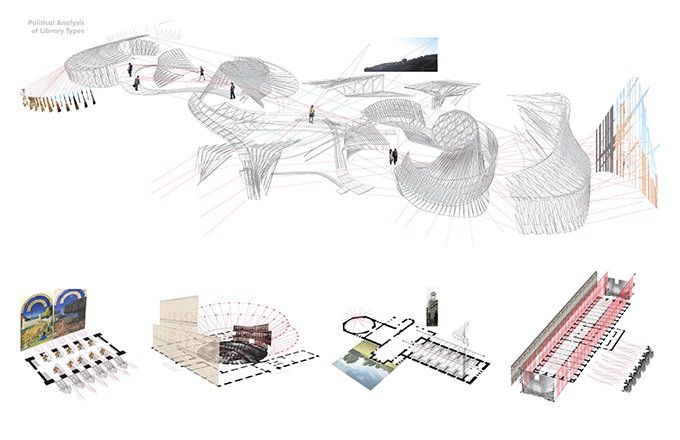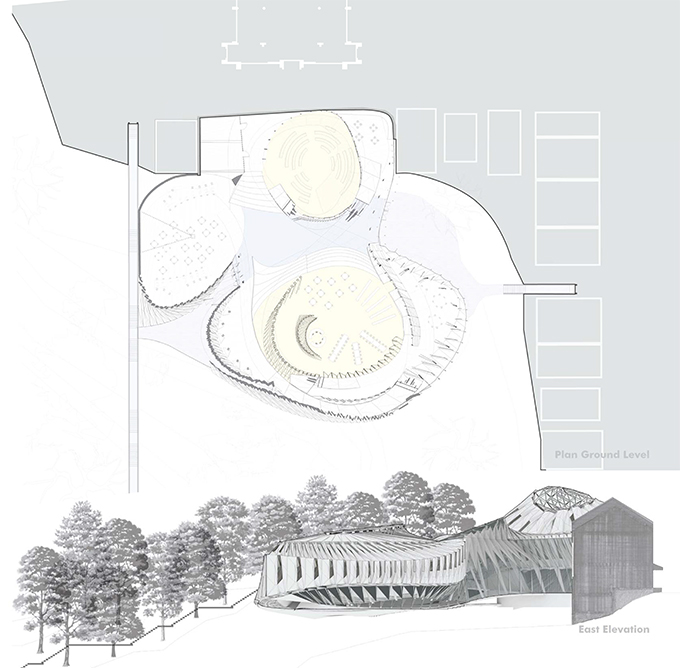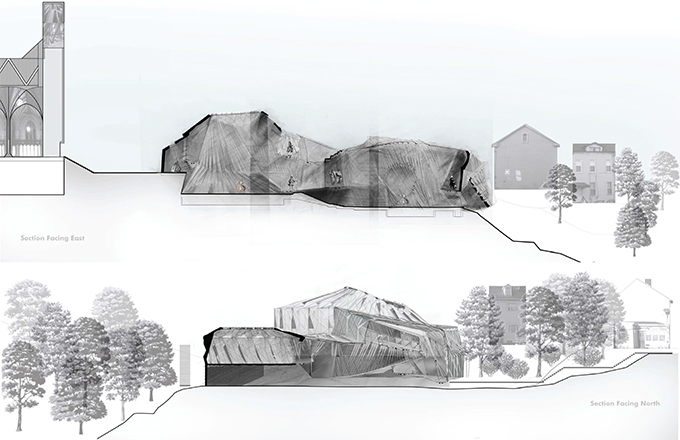Matthew Z Huber | Design Thinking
Troy Hill Library
Date: Spring 2011
I began by examining normative library types, as characterized by certain key historical examples. The medieval library places the scholar in seclusion, the panopticon places the user under surveillance, the enlightenment library places one in a sublime, infinite order of knowledge, and the Richardsonian model places the citizen in contact with a bucolic nature, a local cornerstone of democracy.
My project hybridizes and distorts these normative models in order to establish a heterotopic system, one which embraces the logic of the many, that allows for “other” modes of inhabiting space. Rather than a single exclusionary spatial logic, multiple are at play.
An infinite ramp, containing book shelves, spirals around three separate nodes generating views from and to different elements of the context as well as other users of surrounding spaces. Yet, the shelves filter these views and each center competes against another, disembodying the center as a place of power. The loop is simultaneously closed, yet infinite. Similarly, the Baroque curvature of the spatial configuration folds and implicates one space with another, the periphery with the center, the context with the object. Like a torus, the central void (lobby) is both outside and inside. Apertures along the periphery filter, fracture, fragment, and focus views.
My project seeks to operate within a minor language of typological norms, one that is deviant and distorted, yet reterritorializes the major languages, by resituating their political functions amongst many, by disrupting their primary performances, and by employing their devices for different ends. As Deleuze contends, the minor language sends the major one running, places the major into continuity, setting it into a condition of becoming minor itself.
Perceptual Map of Site:

Analysis of canonical library types through history and their political affects led to a system that accomodates many political forms simultaneously:

Orthographic Drawings:


Renderings:
